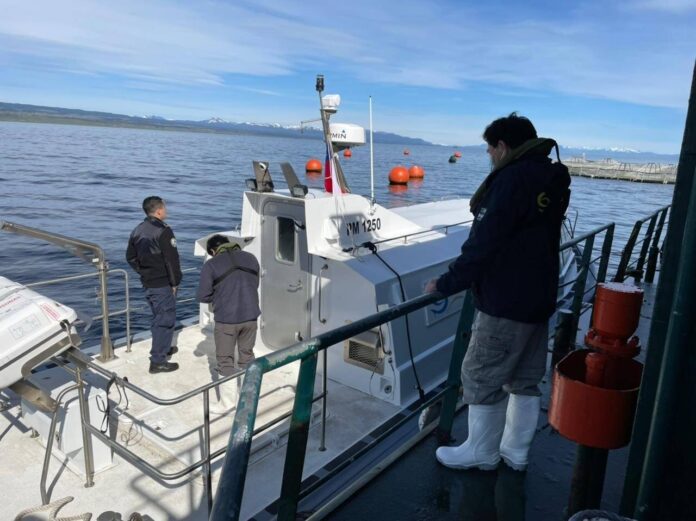“Sernapesca warned [previously] that safety standards against adverse weather conditions were not met and that there was a risk of fish escape.”
Chile’s National Fisheries and Aquaculture Service, Sernapesca, has announced the conclusion of its investigation into the escape of fish from the Skyring 3 center, operated by Nova Austral company that occurred in November last year.
Regional director of Sernapesca, Patricio Díaz, said, “the technical analysis carried out has determined that there was indeed an escape of an order of magnitude of between 268,000 and 387,000 fish of the Atlantic salmon species, with an average weight of 235 grams, in Ensenada Ponsomby, southeastern sector of the Skyring Breast, in the Magellan region.”
Weather conditions
It was initially discovered that 482,700 fish were missing when the company removed the existing fish in the site due to bad weather. The company attributed the missing fish to predation by sea lions, claiming they had entered the site.
The Sernapesca report, however, concludes that the escape was caused by the failure of the cages, which were not sufficient given the weather conditions: “The analysis of records obtained in the field inspections shows that there was a rupture of fishnets and that the aviary mesh also did not have the mesh size that prevented the loss of fish in the upper area of the cages, due to mechanical action against intense waves events. These problems were possibly aggravated by the abandonment of the farm for periods of time, when there were no guards.”
The report also highlights that the site was planted between June and September 2021 and that already in the last month, “Sernapesca warned that safety standards against adverse weather conditions were not met and that there was a risk of fish escape. The company rejected the observations, providing arguments and background that were not shared by the audit body and at that time a first complaint was made to the Superintendence of the Environment (SMA), for not having cultivation modules and anchorings that present adequate safety conditions, in violation of the provisions of Article 87 of the LGPA and Article 4 letter E of RAMA.”
Sea lion theory rejected
Regarding the theory that the missing fish have been taken by sea lions, Sernapesca Magallanes indicated that the theoretical consumption of biomass by sea lions would be much lower than the total number of escaped fish and therefore does not explain the number of missing fish.
Consequently, on January 14, the respective complaint was delivered to the SMA for “not immediately notifying the Environmental contingency for fish leakage to the Service, Maritime Authority and Superintendence of the Environment.
Sernapesca stressed the importance of companies immediately reporting these contingencies, so that they can activate the respective protocols and thus avoid greater impacts on the environment.

